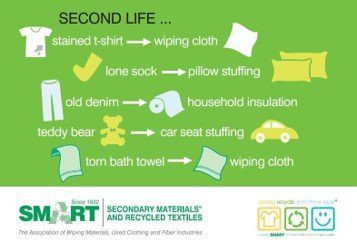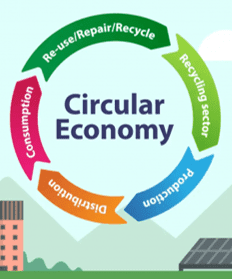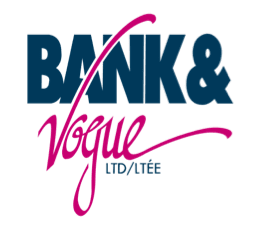The impact of COVID-19 on the Halloween Season
COVID-19 has turned the world upside down. Everything as we know has been impacted; including how we live and interact with each other, how we work and communicate, how we commute and travel. Halloween season has not been an exception. Non-medical masks will not be replaced with Halloween costume masks, gatherings will be limited, and trick-or-treat will be restricted in most places.
This is also going to have an economic impact. According to the National Retail Federation, consumer spending during Halloween is expected to decrease from $8.8 billion in 2019 to 8.05 billion in 2020 due to the drop in participation. However, consumers continue to place a lot of emphasis on celebrating our traditional holidays, even by untraditional standards. Therefore, retailers are prepared to meet the increased demand for seasonal décor, costumes and other items that allow families to celebrate Halloween safely.
Over the years, charities have been working on making their thrift stores the best place to purchase all Halloween costumes. In fact, it is not only because thrift stores are gold mines of decade-authentic throw-back fashions that make dressing up easy at affordable prices but also because you have the option of buying a mix of new and vintage pieces.
For instance, according to the last Goodwill Halloween poll, Goodwill ranks as the most preferred Halloween thrift store destination for the type of customer who prefers do-it-yourself (DIY) costumes. Goodwill has always been a destination for shoppers searching for unique, one-of-a-kind fashions and costumes. This is why the Halloween season is their busiest time of year. Additionally, each purchase funds education and career services for people who are going through life transitions so that they can be equipped with the right skills and support, and achieve a sustainably better future through employment.
Moreover, let’s observe the environmental variable and the benefits of reusing costumes. 12,500 tons of Halloween costumes are sent to the landfill each year. Cheap costumes could be found everywhere in the weeks leading up to Halloween. However, parents don’t often want to keep them after the event. Therefore, buying costumes and decorations from local thrift stores contributes to the circular economy and provides several benefits such as reducing greenhouse gases, saving landfill space, and last but not least, conserving vital energy.
Bank and Vogue as one of the major brokers of second-hand goods in North America plays a key role in this process. In fact, Bank and Vogue takes great pride in helping charities and thrift stores to find a home to their Halloween overstocks after each Halloween peak season. All in all, Bank and Vogue’s ultimate goal is to contribute to a more circular economy and be socially responsible to all its stakeholders.
A Goodwill Conference Story
Goodwill Industries International is an American nonprofit organization that provides job training, employment placement services, and other community-based programs for people who have barriers preventing them from otherwise obtaining a job. Goodwill is funded by a massive network of retail thrift stores, which operate as nonprofits as well.
Throughout the year, Goodwill organizes conferences for many different levels of the organizations. With the interruption of this years’ sequence of conferences, Goodwill launched their very first online conference at the beginning of this month. It was an incredible opportunity to digitally connect with different organizations from all over North America. The conference was meant to develop leaders of all levels in the market. It consisted of many networking events and workshops. The workshops spoke about diversity, making changes, and vision for transformation.
Bank & Vogue has been an active participant in these events for many years and takes pride in being a bronze sponsor this year. Throughout the conference, Bank and Vogue shared its knowledge in salvage clothing with several Goodwill members. In fact, Bank and Vogue explained to all the attendees, who visited their booth, how to maximize the benefits of the salvage program.
For instance, Bank and Vogue shed light on how important it is for some organizations to know how to load a container for a matter of diversification. Some organizations feel really comfortable working with the domestic markets. However, this year everybody has witnessed unprecedented market circumstances due to the pandemic. Therefore, Bank and Vogue recommends to their partners such as Goodwill not to put all the eggs in the same basket. It is important to make sure that the salvage products go to different markets. Bank and Vogue can make it happen through its extensive and reliable customer network.
All in all, the first digital conference was a total success. It was just a fantastic opportunity to network with key individuals in Goodwill International Inc. The next digital conference will take place on November 9 – 11, 2020. Bank and Vogue is looking forward to connecting with CEOs and board members in such a great event.
Being a part of SMART & Upcoming Summit
 Secondary Materials and Recycled Textiles, also known as SMART, is a global organization of companies involved in the reuse and recycling of textiles and related secondary materials. As an international trade association working to promote the for-profit textile recycling industry, SMART serves the common interests of its members through networking, advocacy, and education. All SMART members use and convert recycled and secondary materials from used clothing.
Secondary Materials and Recycled Textiles, also known as SMART, is a global organization of companies involved in the reuse and recycling of textiles and related secondary materials. As an international trade association working to promote the for-profit textile recycling industry, SMART serves the common interests of its members through networking, advocacy, and education. All SMART members use and convert recycled and secondary materials from used clothing.
Bank & Vogue has been a proud member of SMART for over 15 years, from which year after year we have been able to learn from and meet many different companies around the globe. In 2020, Helene Carter from Bank & Vogue became part of SMART’s board of directors. It has been an incredible honour to be part of an organization that advocates so passionately towards a circular economy.
SMART organizes many Summit’s throughout the year to educate people about secondary materials and recycled textiles, and brings like-minded people together to network and learn from each other. Even though the pandemic pushed some of their Summits, it’s with excitement that we announce that the SMART Digital Summit will be coming to your screen this October 27th – 29th, 2020. To learn more about the Summit or to register, please visit the summit’s website.
The Shift into a Circular Economy

A circular economy is an economic system of closed loops in which raw materials, components, and products lose their value as little as possible. This system aims at eliminating waste and the continual use of resources; having a circular, make-use-reuse-remake-recycle approach. According to the Ellen MacArthur Foundation; “in contrast to a ‘take-make-waste’ linear model, a circular economy is regenerative by design and aims to gradually decouple growth from the consumption of finite resources”. Circular systems implement reuse, sharing, repair, refurbishment, remanufacturing, and recycling to create a closed-loop system. The system is aimed to keep products in use for a longer period of time. As a result, improving the use of resources and protecting the environment.
Over the years, many companies have implemented more circularity into their business models; including the heritage brand of over 160 years of operation: Levi’s. At the beginning of October, they launched Levi’s SecondHand. Levi’s SecondHand is their first buy-back program, which allows customers to purchase second-hand jeans and jackets on Levi.com. Moreover, this program also allows customers to return their worn jeans and jackets to a Levi’s store, for a gift card that can be used towards a future purchase. Levi’s created this program for customers with all types of worn Levi’s; denim that can be resold, vintage denim, and denim that is too worn to resell.


This is one initiative that Levi’s is executing in order to create more circularity within their products and their impact as a company on the environment. In July, Levi’s launched their most sustainable jean yet; it was developed in partnership with Swedish company Re:newcell. The jean is made with 60% organic cotton and Circulose, Re:newcell’s breakthrough material that includes 20% recycled denim and 20% sustainably sourced viscose. Bank & Vogue has been a key seller of denim for Re:newcell, which is used to create their circulose material. This is an exceptional example of a truly circular economy; by taking used jeans and remaking them into new and sustainable jeans that can be sold to consumers. This is what the future of fashion is going to look like, one that is circular and mindful of the resources this world provides us with.






